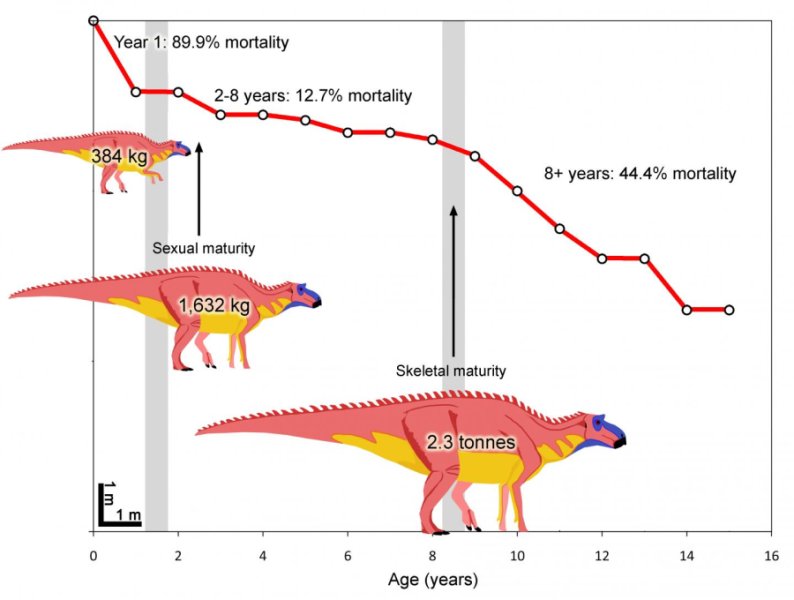
Research published in the journal Paleobiology is showing more about the life history of Maiasaura peeblesorum than any other known dinosaur.Credit: Courtesy Holly Woodward
Fossil bone microanalyses reveal the ontogenetic histories of extinct tetrapods, but incomplete fossil records often result in small sample sets lacking statistical strength. In contrast, a histological sample of 50 tibiae of the hadrosaurid dinosaur Maiasaura peeblesorum allows predictions of annual growth and ecological interpretations based on more histologic data than any previous large sample study. Tibia length correlates well (R2>0.9) with diaphyseal circumference, cortical area, and bone wall thickness, thereby allowing longitudinal predictions of annual body size increases based on growth mark circumference measurements. With an avian level apposition rate of 86.4 μm/day, Maiasaura achieved over half of asymptotic tibia diaphyseal circumference within its first year. Mortality rate for the first year was 89.9% but a seven year period of peak performance followed, when survivorship (mean mortality rate=12.7%) was highest. During the third year of life, Maiasaura attained 36% (x=1260 kg) of asymptotic body mass, growth rate was decelerating (18.2 μm/day), cortical vascular orientation changed, and mortality rate briefly increased. These transitions may indicate onset of sexual maturity and corresponding reallocation of resources to reproduction. Skeletal maturity and senescence occurred after 8 years, at which point the mean mortality rate increased to 44.4%. Compared with Alligator, an extant relative, Maiasaura exhibits rapid cortical increase early in ontogeny, while Alligator cortical growth is much lower and protracted throughout ontogeny. Our life history synthesis of Maiasaura utilizes the largest histological sample size for any extinct tetrapod species thus far, demonstrating how large sample microanalyses strengthen paleobiological interpretations.
Citation: Holly N. Woodward, Elizabeth A. Freedman Fowler, James O. Farlow and John R. Horner (2015). Maiasaura, a model organism for extinct vertebrate population biology: a large sample statistical assessment of growth dynamics and survivorship. Paleobiology, 41, pp 503-527. doi:10.1017/pab.2015.19.
Key: WFS,Riffin T Sajeev,Russel T Sajeev,World Fossil Society



 October 26th, 2015
October 26th, 2015  Riffin
Riffin  Posted in
Posted in  Tags:
Tags: 